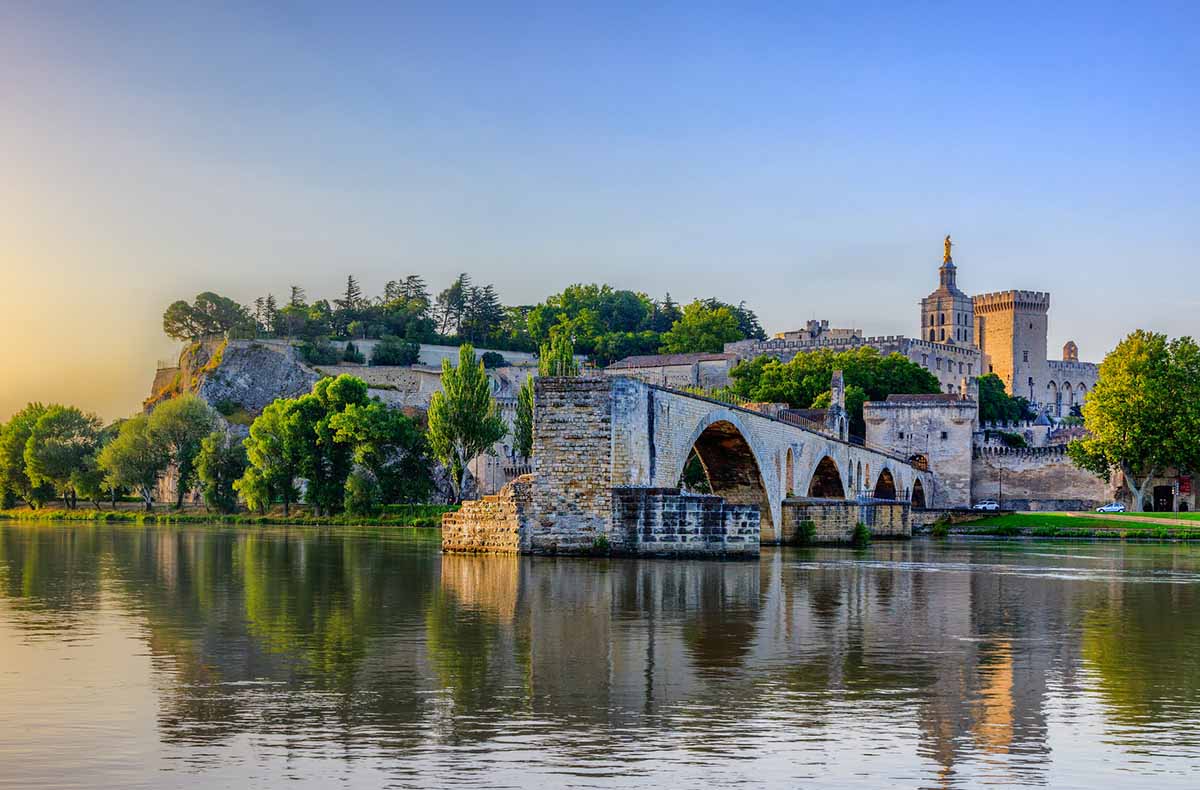
Avignon is not the most famous or impressive of French cities, but only a grump would turn down a visit. It’s a perfectly nice place in the southern hills, surrounded by unobjectionable lavender fields. It has a semi-professional rugby team and three train stations. The one in the city center is under construction at the moment, and if that’s the one you arrive at, the first thing you notice about Avignon is how encircled by medieval walls it is. For this, you can thank the antipopes.
An antipope is perhaps not quite as exciting as the name suggests, which is something like “the Wario of popes.” In reality, most of us would find an antipope—of whom there were two in Avignon—hard to distinguish from a garden-variety pope, if through some tear in the space-time continuum, we encountered one today.
But for Europeans of the late 14th and early 15th centuries, the antipopes of Avignon were scandalous in ways that hold surprising relevance for our own times. Imagine if an American anti president set up shop in Panama and built himself a knockoff White House where he started passing laws and giving speeches (admittedly a scenario less fanciful than it was ten years ago). If nothing else, it would probably shake your assumption that life, having always been as it was in the past, is destined to always be so in the future.
Don’t worry: This is a travel story, not a history lecture. Your correspondent has no wish to suggest that the ecclesiastical power struggles of this Clement or that Bernard deserve one megabyte of your brainspace. The Avignon antipopes are interesting not because of anything they themselves said or did, but for the fact they existed at all, and what this reveals about the impermanent nature of seemingly timeless institutions.
Put another way, the walled city of Avignon is a giant physical reminder that the past was much weirder and closer than we often imagine.
Most of our environments are designed to limit our exposure to “weirdness”. That’s impossible in a place like Avignon, which was built and shaped by people with strange desires and a lot of very large rocks at their disposal. Through its continued existence it reminds us that our species is, and has always been, a bunch of weird little guys.
Speaking of Avignon, let’s return to its walls for a moment. Built of grayish-beige stone, as mentioned before they are enormous in height and girth. Avignon’s walls are the exact kind of walls you’d want if you’d proclaimed yourself God’s supreme earthly messenger over the strenuous objections of another supreme earthly messenger who happened to have an army with the latest siege weapons. Today these costly fortifications are mainly there to attract tourists and constrict traffic; they perform admirably at both.
Within the medieval walls of Avignon is a forest of neat stone buildings, most of which have the stately presence of indeterminate age that characterizes many mid-size western European cities. There are some establishments—bakeries and barbershops—the antipopes would easily recognize, as well as others—gastronomic experience laboratories and luxury guesthouse concepts—whose purpose they might grasp upon reflection, if not grok immediately. The palace itself is still there, albeit extensively remodeled on many occasions. Walking through the streets gives you the impression of existing in two timelines at once, which is pleasant once your brain gets oriented.
Avignon’s most thought-provoking site is just outside the walls, though. Its famous bridge over the Rhône, commemorated in the children’s song Sur le pont d’Avignon, is not especially old or tall or beautifully decorated. Your correspondent, knowing little about the bridge before he arrived in the city, was befuddled to see a group of tourists clustered around its tower on the cityside shore, pointing their cameras at an utterly ordinary pillar of stones. “They’re taking pictures of nothing,” he said to himself, scoffing at the click-happy fools.
Then he saw what they were seeing. They were indeed taking pictures of nothing, because Avignon’s bridge doesn’t actually cross the whole river. That’s why it’s special. It’s famous for being the world’s most useless bridge.
For the price of 10 euros you can buy a ticket to walk on the unfinished bridge and discover the long, mostly boring story of why it only spans about half the river. (The short version: An ambitious local prophet/entrepreneur thought a bridge would be a great moneymaker and started building one but couldn’t finish the job, which led a succession of profit-minded entities to take over the project and also fail to complete it.) There are a few chapels, and some placards about various saints. At night the bridge is illuminated with lights, which sparkle on the swift dark water below.
Like the rest of Avignon, the bridge to nowhere is 1) the lawful outcome of a convergence of historical causes and conditions; 2) absurd, when you think about it for a moment. The whole place exists as a monument to how different the world would look if fate’s finger had flicked a different domino. It might not be Europe’s most photo-friendly tourist attraction, but it’s one of the most mind-expanding.
At a time when disputes over popery seem less relevant than ever, the phenomenon of antipopes remains oddly germane. The path our society is on is not the only one, nor is its continuation inevitable. Every road has many forks. Ones we’ve taken in the past have led us here, but things easily could’ve been different. And who knows where the next one will go?



